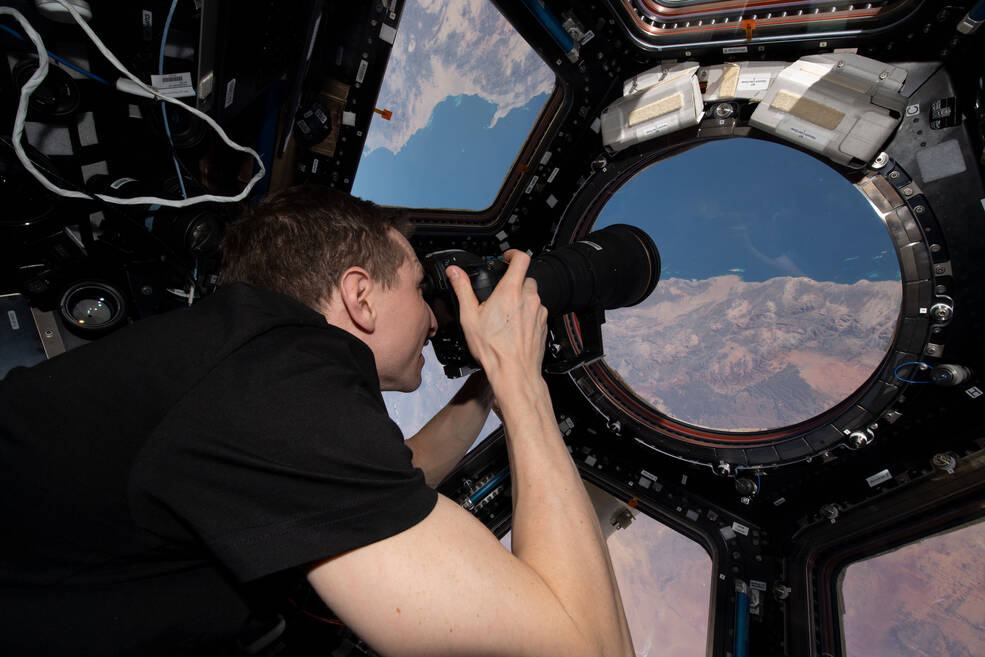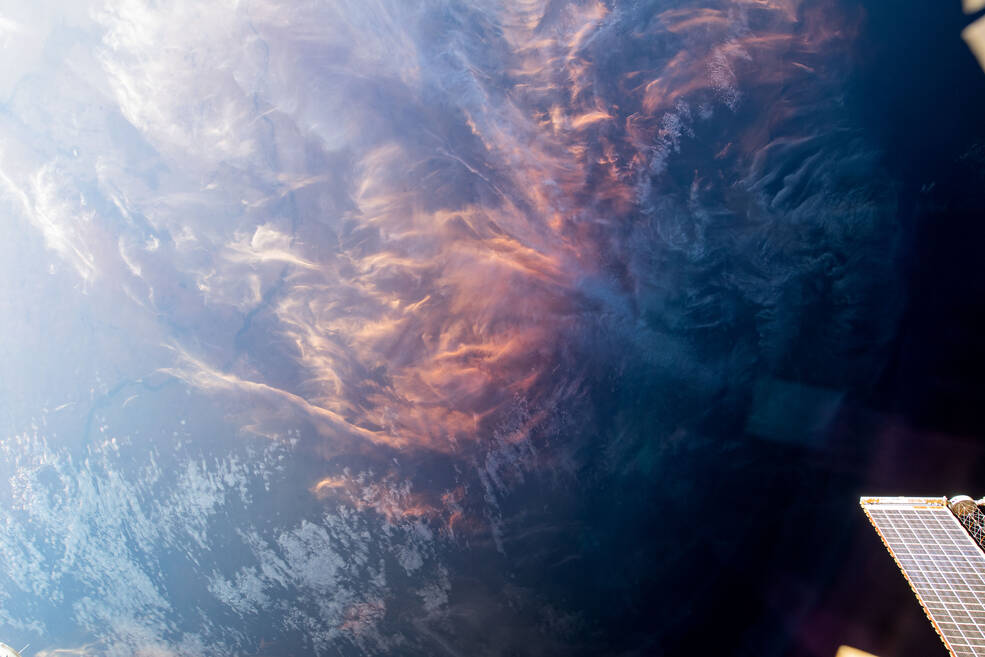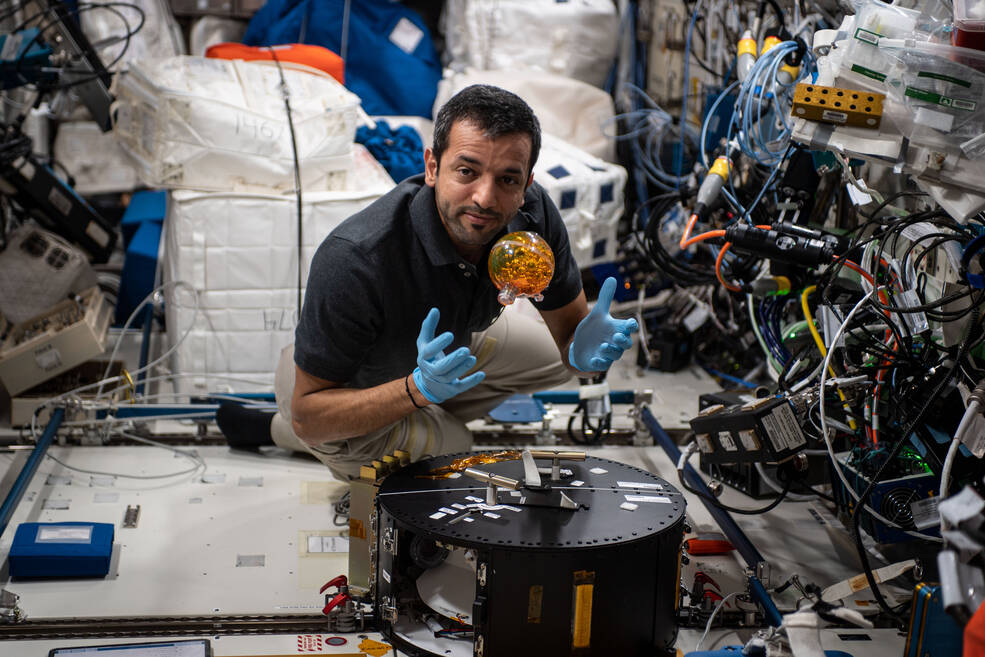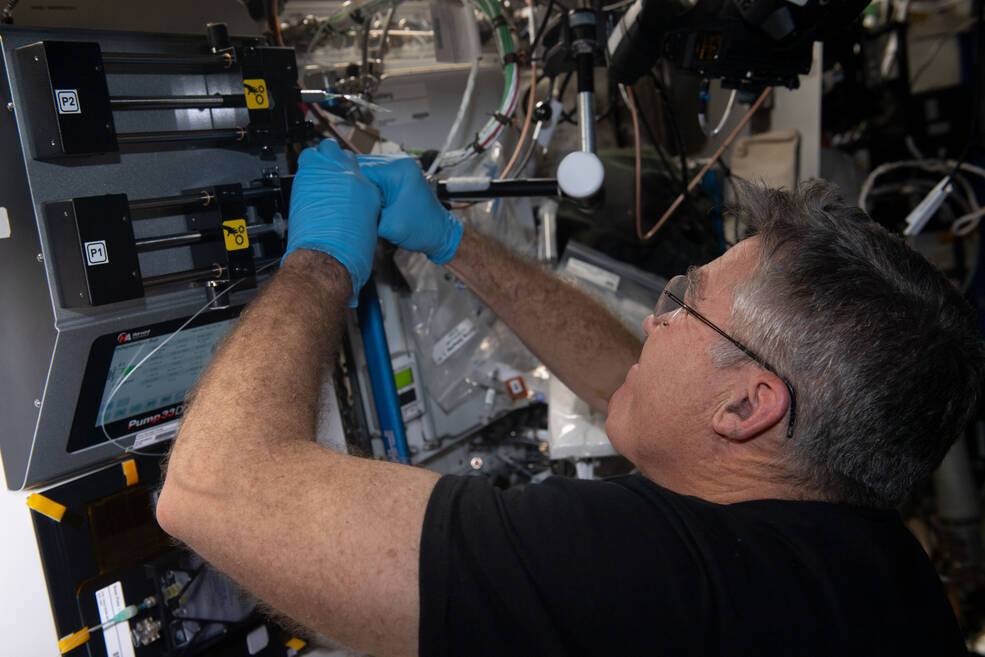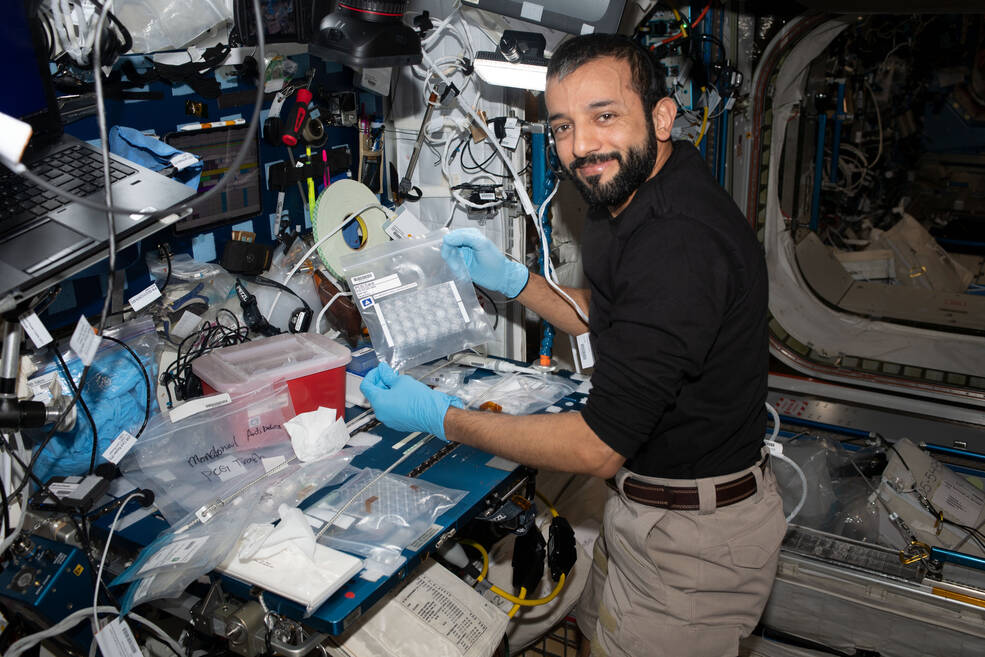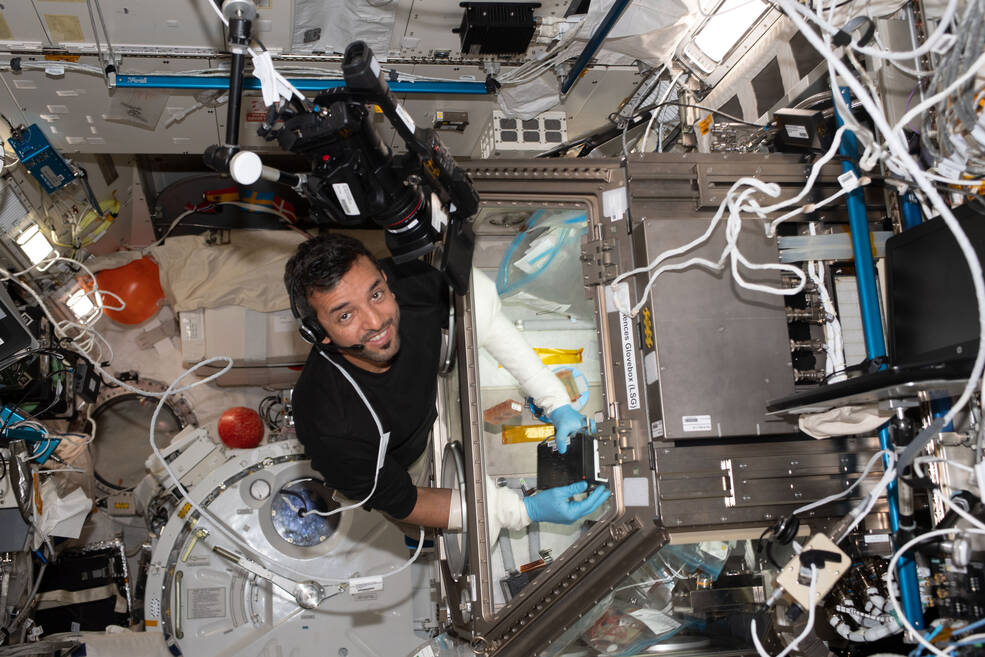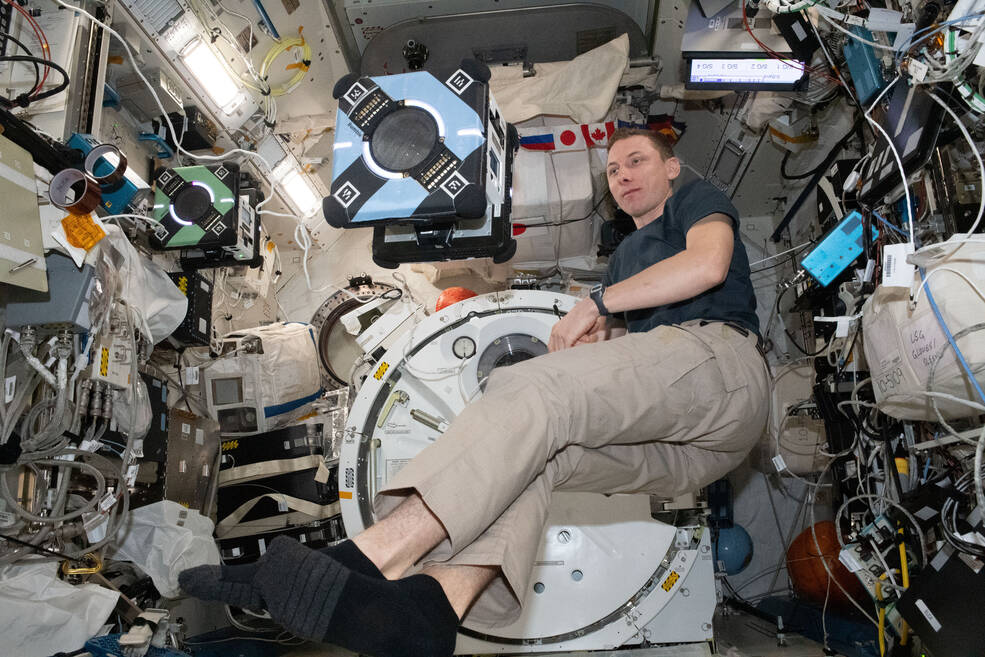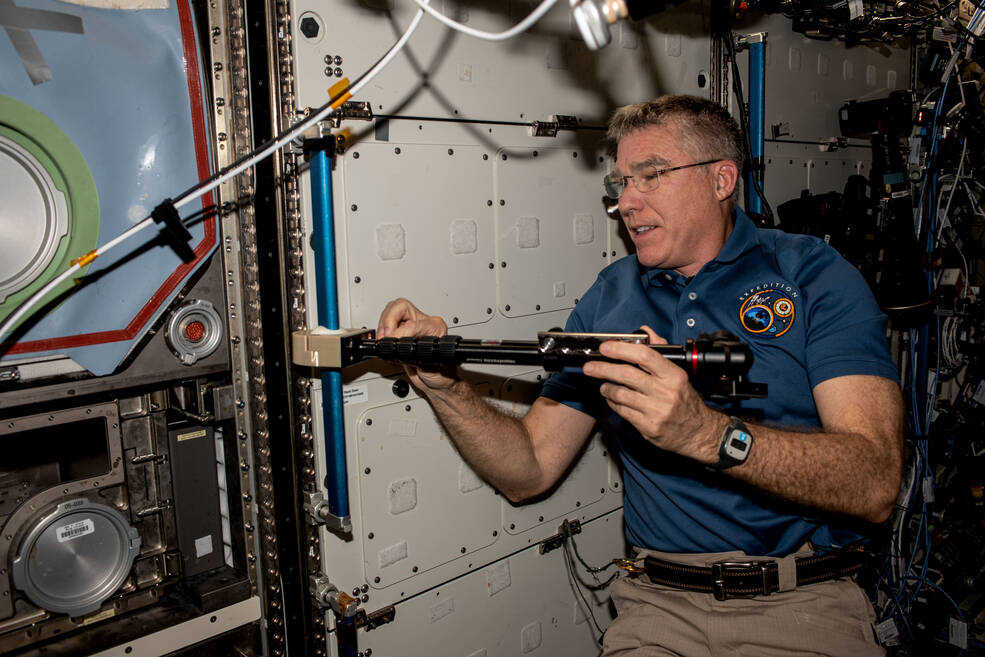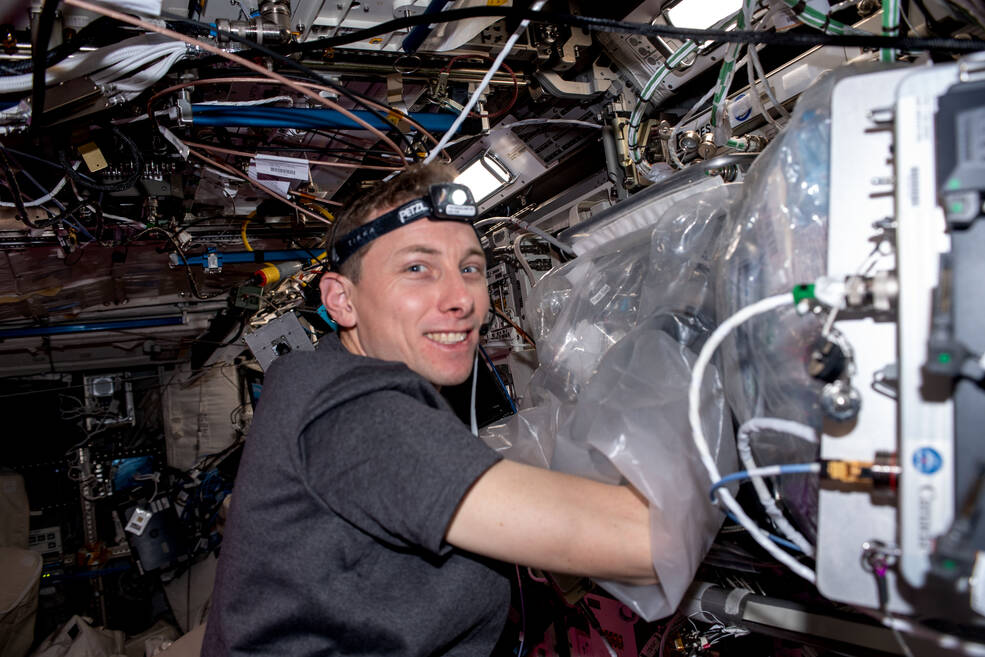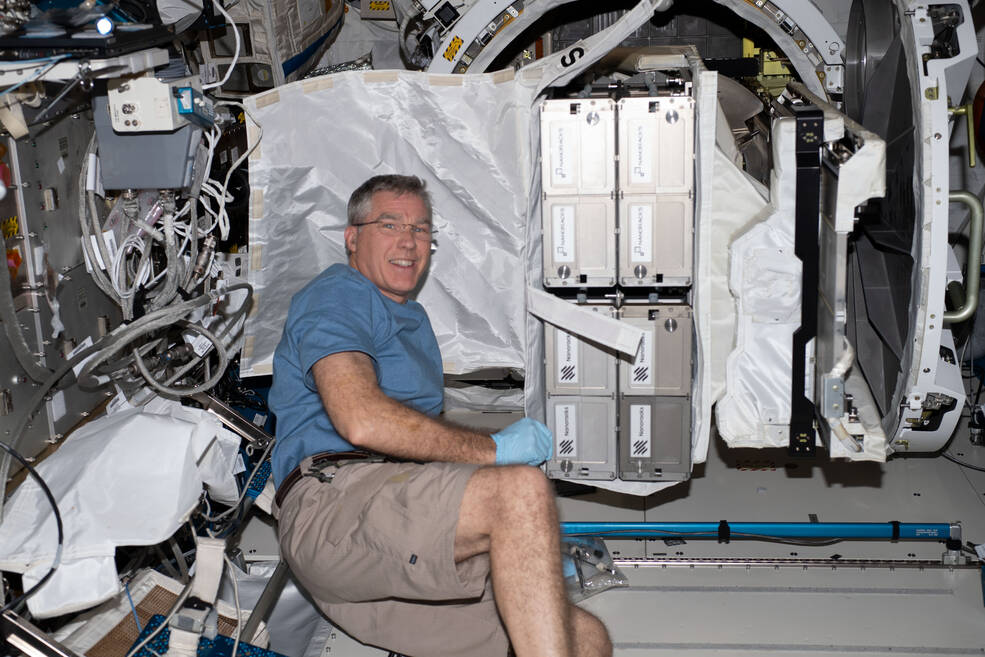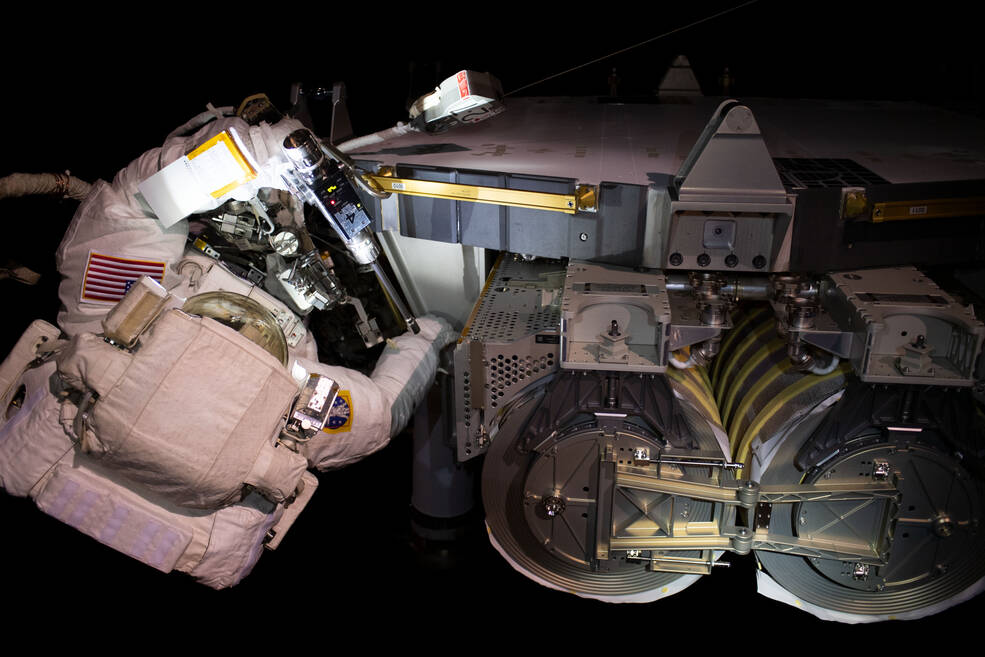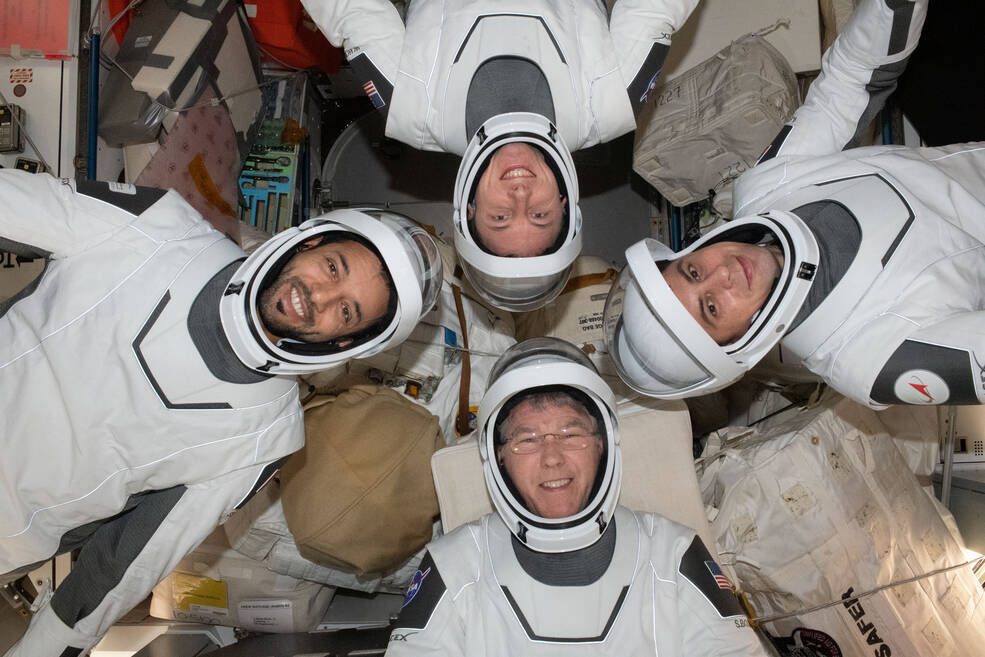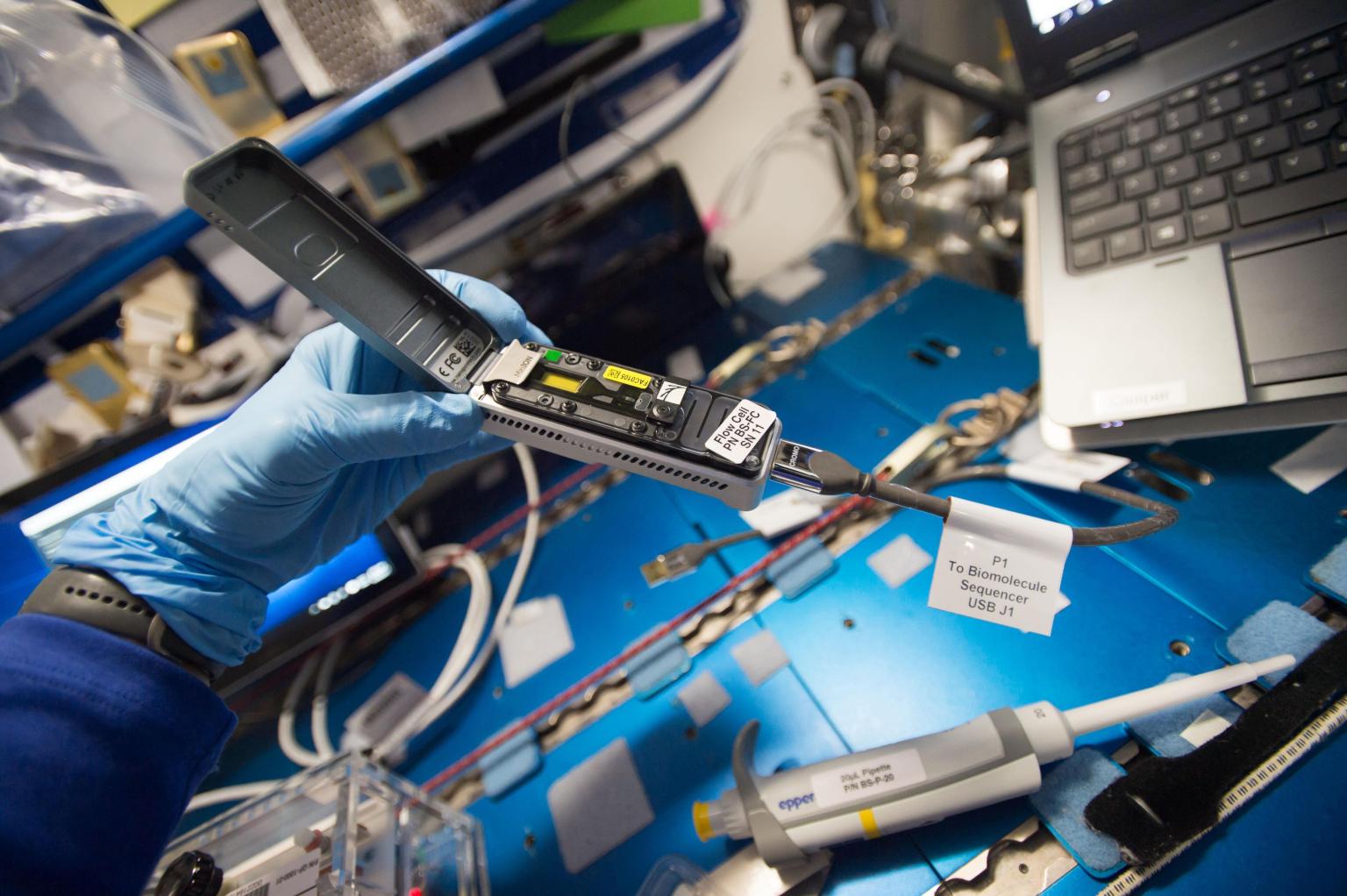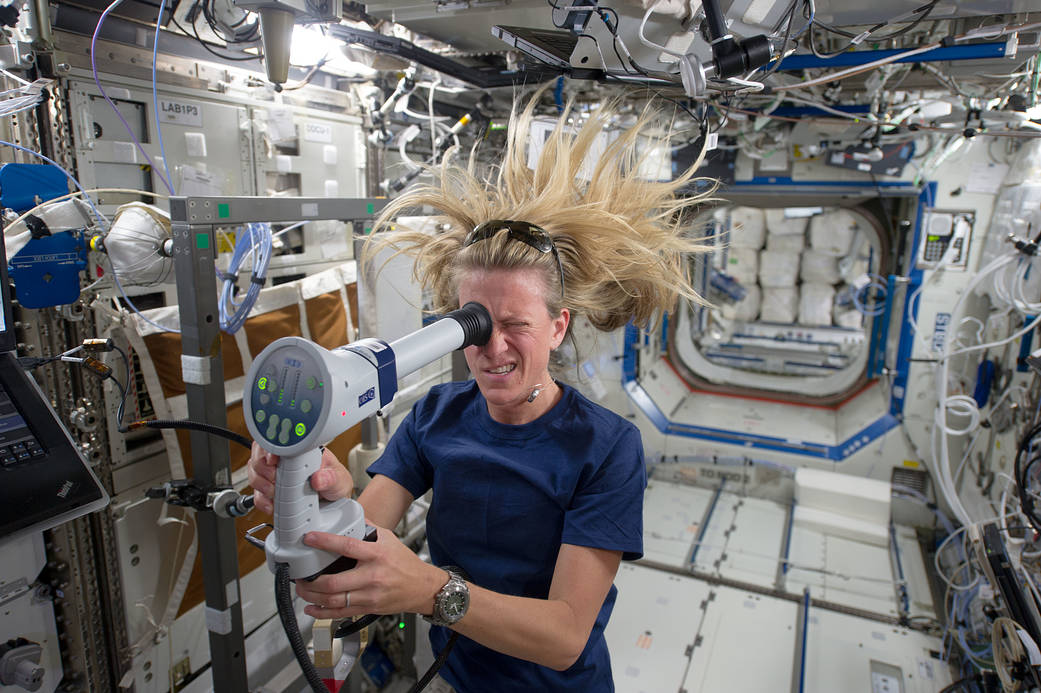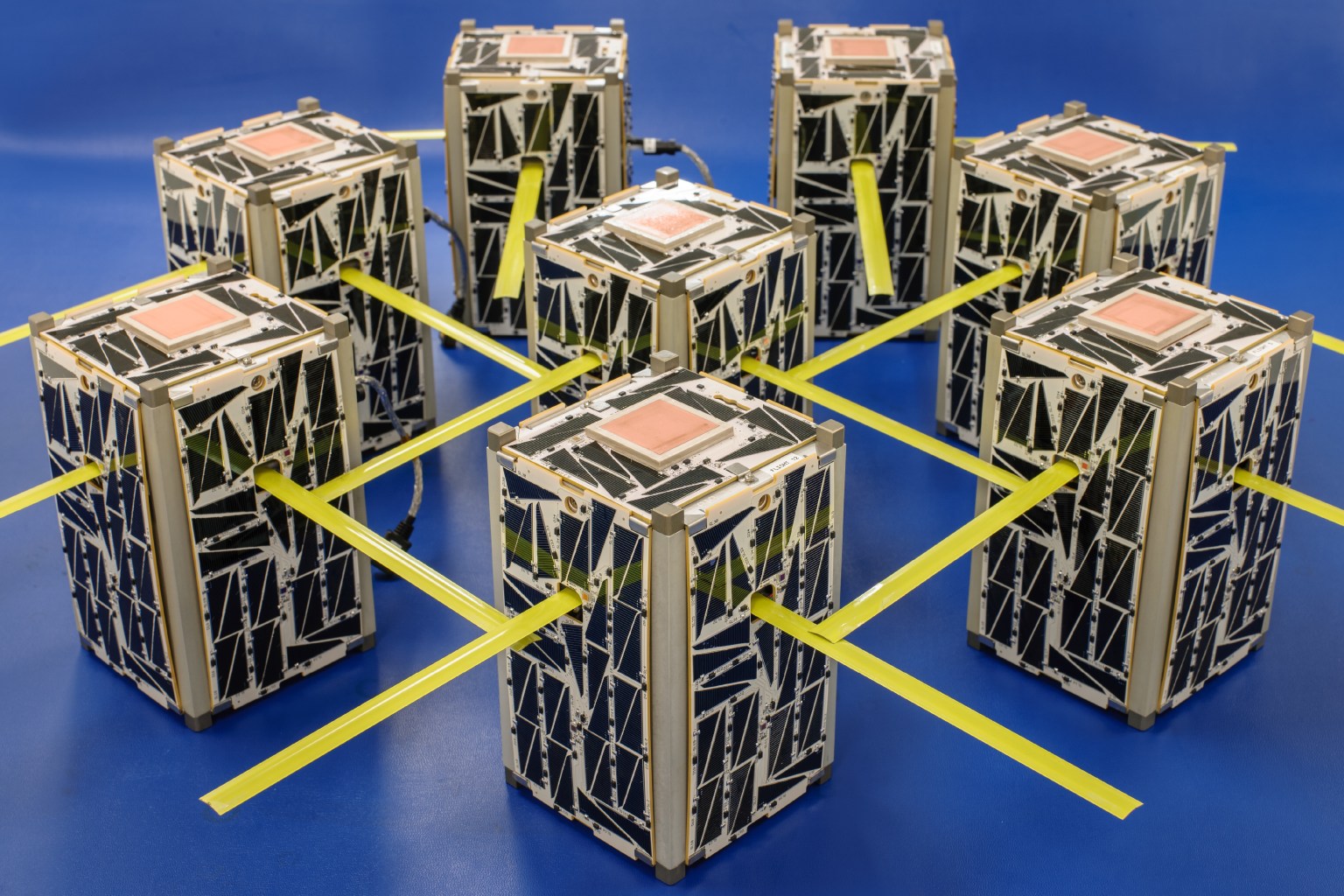NASA’s SpaceX Crew-6 soon wraps up its mission aboard the International Space Station. NASA astronauts Stephen Bowen and Woody Hoburg, UAE (United Arab Emirates) astronaut Sultan Alneyadi, and Roscosmos cosmonaut Andrey Fedyaev spent their months on the orbiting lab conducting scientific investigations and technology demonstrations that help prepare humans for future space missions and benefit people back on Earth.
Here’s a recap of the Crew-6 scientific journey aboard the space station.
Download full-resolution versions of all photos in this article.
Keeping an Eye on Earth
NASA astronaut Woody Hoburg photographs the Saudi Arabian Red Sea coast as part of Crew Earth Observations or CEO. Millions of photographs taken by crew members aboard the space station provide a unique record of changes on Earth’s surface over time and help scientists understand urban growth, natural disasters, the effects of climate change, and more.
White and pink clouds cover the coast of the Red Sea, the northernmost tropical sea in the world, in this image taken from the space station.
The Physics of Fluids
This floating sphere stands in for a spacecraft fuel tank as UAE astronaut Sultan Alneyadi works on FLUIDICS. This investigation from ESA (European Space Agency) evaluates sloshing and wave turbulence of fluids. Results could help increase the lifetime of satellites through better fuel management and improve understanding of how Earth’s oceans work, improving climate prediction systems and the use of ocean renewable energy.
NASA astronaut Stephen Bowen works on Foams and Emulsions, which examines the properties of foams (dispersions of bubbles in a liquid) and emulsions (dispersions of droplets in a liquid) in microgravity. Foams and emulsions make up many food, consumer, and personal care products and are used in a variety of industries. Researchers are looking for more efficient ways to pack and stabilize these dispersions.
Human Health in Space and on Earth
UAE astronaut Sultan Alneyadi sets up hardware for Monoclonal Antibodies PCG-2. The investigation examines the process for crystallizing monoclonal antibodies – lab-made proteins that function like human antibodies – in microgravity. Improving crystallization could reduce the cost of producing drugs and enable formulations that do not need cold storage and can be administered more easily.
Cardinal Heart 2.0 uses heart organoids to test whether existing drugs reduce the changes that are seen in heart cell function and gene expression after several weeks of spaceflight. Results could support development of effective treatments to improve the health of astronauts and cardiac disease patients on Earth. UAE astronaut Sultan Alneyadi works on the investigation in the space station’s Life Sciences Glovebox.
High-flying High Tech
NASA astronaut Woody Hoburg tests one of the space station’s Astrobee robots for Zero Robotics, a student competition to write software to control the free-flying robots. The program promotes teamwork and awareness of space career opportunities and students learn about artificial intelligence, systems engineering, and human-robot collaboration.
Astronauts asked for a better way to position and stabilize cameras used to track targets on the ground or to take images and video inside the space station. Students responded by designing the HUNCH Ball Clamp Monopod, which NASA astronaut Stephen Bowen installs here for testing.
Bioprinting replacement organs in space moved one step closer to reality during the Crew-6 mission when BFF-Meniscus-2 printed knee tissue. Musculoskeletal injuries, including tears in the meniscus, are a common injury in the U.S. military, and the ability to bioprint this tissue also could benefit crew members who experience injuries on future missions. NASA astronaut Woody Hoburg loads tissue cassettes into the Bio-Fabrication Facility for the investigation.
NASA astronaut Stephen Bowen with CubeSats to be deployed from the space station for the 26th NanoRacks CubeSat Deployer (NRCSD-26) mission. The satellites included Nanoracks-RADSAT-SK, which tests a radiation detection system; Nanoracks-SC-ODIN that captures data on dust in storms in Argentina and Namibia; Nanoracks-ESSENCE, to monitor solar storms, arctic ice, permafrost thaw, and forests in the Canadian Arctic region; Nanoracks-Iris, an observation of space weathering of geological samples; and Nanoracks-Ukpik-1, which uses a VR camera to capture 360-degree images and video of Northern Canada.
Out and About in Space
NASA astronaut Stephen Bowen readies one of the Roll-out Solar Arrays (IROSA) for installation during a spacewalk. The collection of new arrays, whose deployment was previously tested on the space station, is expected to enable a 30% increase in power for operations and scientific investigations on the orbiting lab.
Crew-6 crew members wear pressure suits before they relocate the SpaceX Dragon to free up a docking spot for Axiom Space’s second private astronaut mission to the space station, which brought new scientific investigations and technology demonstrations. Clockwise, from bottom NASA astronaut Stephen Bowen, UAE astronaut Sultan Alneyadi, NASA astronaut Woody Hoburg, and Roscosmos cosmonaut Andrey Fedyaev.
Melissa Gaskill
International Space Station Program Research Office
Johnson Space Center























